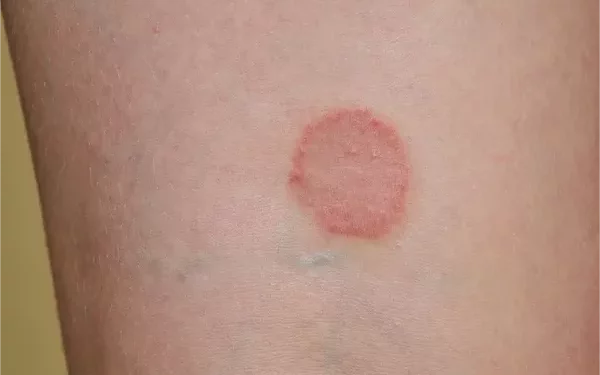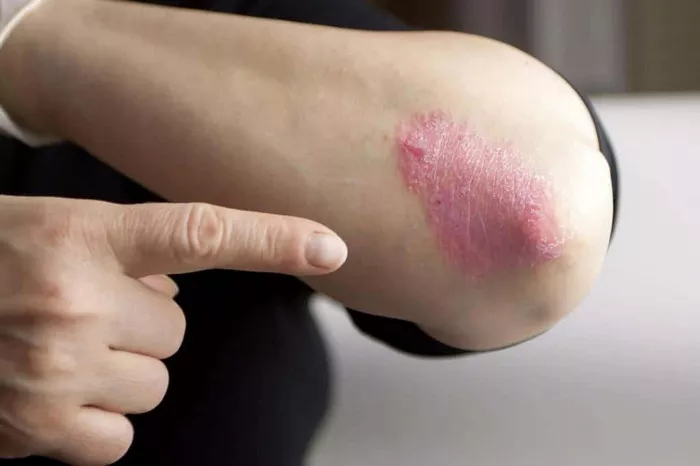Ringworm, despite its misleading name, is not caused by worms but rather by a fungal infection. This common condition affects millions worldwide, manifesting in various parts of the body, including the scalp, feet, groin, and other skin areas. One of the primary symptoms associated with ringworm is flaky skin, which can be distressing and uncomfortable. This article delves into the intricate relationship between ringworm and flaky skin, exploring the underlying causes, symptoms, treatment options, and preventive measures.
Understanding Ringworm
Ringworm, or tinea, is a group of contagious fungal infections caused by dermatophytes. These fungi thrive on keratin, a protein found in skin, hair, and nails. Depending on the affected body part, ringworm manifests differently and is named accordingly:
- Tinea corporis: Affects the body.
- Tinea pedis (athlete’s foot): Affects the feet.
- Tinea cruris (jock itch): Affects the groin area.
- Tinea capitis: Affects the scalp.
- Tinea unguium (onychomycosis): Affects the nails.
Despite the varied manifestations, the hallmark symptoms often overlap, including itching, redness, and notably, flaky skin.
How Ringworm Develops
The development of ringworm begins with the invasion of the outer layer of the skin by dermatophytes. These fungi prefer warm, moist environments, making areas like the feet, groin, and armpits particularly susceptible. Infection can spread through direct contact with infected individuals, animals, or contaminated objects and surfaces. Factors such as poor hygiene, excessive sweating, and a weakened immune system can increase susceptibility to ringworm.
Symptoms of Ringworm
The symptoms of ringworm vary depending on the specific type and the affected area. However, common symptoms include:
- Circular, ring-like lesions: These are often red and may have a raised, scaly border.
- Itching and discomfort: These sensations are prevalent and can range from mild to severe.
- Flaky or peeling skin: The infected area often exhibits flakiness, which can progress to cracking and peeling.
- Hair loss: In cases of scalp ringworm, hair loss in patches can occur.
- Thickened, discolored nails: Nail ringworm leads to changes in nail appearance and texture.
Among these symptoms, flaky skin is particularly notable as it often serves as an initial indicator of ringworm.
The Connection Between Ringworm and Flaky Skin
Flaky skin in ringworm infections results from the fungi’s invasion and damage to the stratum corneum, the outermost layer of the skin. As the fungi colonize this layer, they cause an inflammatory response, leading to the breakdown of skin cells and the formation of scales and flakes. This process is a defensive mechanism of the body attempting to shed infected skin cells and prevent further fungal proliferation.
Mechanisms of Flaky Skin
Several biological mechanisms contribute to the development of flaky skin in ringworm infections:
1. Keratin Degradation: Dermatophytes secrete enzymes that degrade keratin, disrupting the integrity of the skin’s protective barrier. This degradation leads to the shedding of skin cells, resulting in flakiness.
2. Inflammatory Response: The body’s immune response to fungal infection includes the release of inflammatory cytokines. These substances promote cell turnover and scaling as the body attempts to remove the infectious agents.
3. Moisture Imbalance: Fungal growth can disrupt the skin’s natural moisture balance, leading to dryness and peeling. This is particularly evident in conditions like athlete’s foot, where excessive moisture and fungal activity are common.
Clinical Observations
Clinically, flaky skin is often one of the first visible signs of a ringworm infection. Dermatologists rely on this symptom, among others, to diagnose the condition. The presence of flaky skin, especially in a ring-like pattern, strongly suggests a ringworm infection and prompts further diagnostic steps, such as skin scrapings and fungal cultures.
Diagnosing Ringworm
Accurate diagnosis of ringworm is crucial for effective treatment. Diagnosis typically involves:
- Clinical Examination: Visual inspection of the affected area by a healthcare provider can often identify the characteristic ring-like lesions and flaky skin.
- Microscopic Examination: Skin scrapings from the infected area can be examined under a microscope to identify fungal elements.
- Culture Tests: Culturing skin samples on specialized media can confirm the presence of dermatophytes.
- Wood’s Lamp: In some cases, a Wood’s lamp (ultraviolet light) can help visualize fungal infections, particularly on the scalp.
Treatment of Ringworm
Treating ringworm involves antifungal medications, which can be topical or systemic, depending on the severity and location of the infection.
1. Topical Treatments
For mild to moderate infections, topical antifungal creams, ointments, or powders are typically effective. Common topical antifungals include:
- Clotrimazole
- Miconazole
- Terbinafine
- Ketoconazole
These medications are applied directly to the affected area, reducing fungal load and alleviating symptoms such as itching and flaky skin.
2. Systemic Treatments
In more severe or widespread infections, oral antifungal medications may be necessary. These include:
- Terbinafine
- Itraconazole
- Fluconazole
- Griseofulvin
Systemic treatments are particularly important for scalp infections and nail ringworm, where topical treatments may not penetrate deeply enough.
Adjunctive Treatments
In addition to antifungal medications, other treatments may help manage symptoms:
- Moisturizers: To combat dryness and flakiness, emollient creams can be used to maintain skin hydration.
- Antihistamines: These can reduce itching and discomfort.
- Proper Hygiene: Maintaining good hygiene practices helps prevent the spread and recurrence of infection.
Preventing Ringworm
Preventive measures play a crucial role in reducing the incidence of ringworm and associated flaky skin. Key strategies include:
- Good Hygiene: Regular washing and drying of skin, especially in areas prone to moisture accumulation.
- Avoiding Shared Items: Refrain from sharing personal items such as towels, clothing, and grooming tools.
- Wearing Protective Footwear: In communal areas like gyms and swimming pools, wearing flip-flops or sandals can reduce the risk of athlete’s foot.
- Keeping Skin Dry: Ensuring skin folds and other susceptible areas remain dry can inhibit fungal growth.
- Prompt Treatment of Infected Pets: Pets can be carriers of dermatophytes, so treating any signs of infection in animals is essential.
Conclusion
Ringworm is a common fungal infection that can cause significant discomfort and cosmetic concerns, particularly due to its association with flaky skin. Understanding the mechanisms behind flaky skin in ringworm infections helps in recognizing and diagnosing the condition early, ensuring prompt and effective treatment. By adopting preventive measures and maintaining good hygiene, the incidence of ringworm and its bothersome symptoms can be significantly reduced. For those affected, a combination of topical and systemic antifungal treatments, along with supportive care, can alleviate symptoms and promote healthy skin recovery.
Related Topics:


























